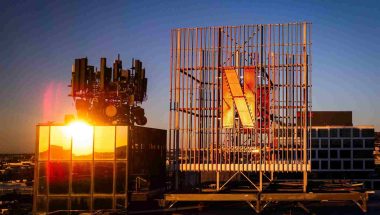- | 9:00 am
These next-gen telescopes will make the James Webb look like a toy
Upcoming telescope designs will dwarf the resolution of the James Webb. One of them is coming very soon to a mountain in Chile. The other may take a century.
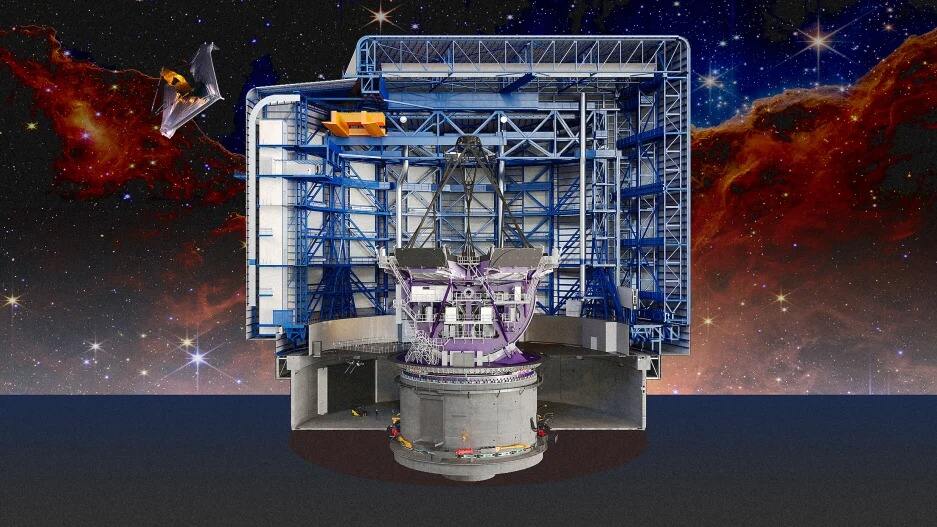
The James Webb Space Telescope (JWST) started its science mission just a few weeks ago, surpassing all expectations while astonishing scientists and the public alike. Its infrared instruments and a light-collecting area 6.25 times larger than the Hubble Space Telescope are delivering sharper photos that go further into the Universe’s past than ever before.
And yet, it will soon feel like a toy camera. The Webb is just the beginning of a new golden age of astronomy that is bringing us devices that will capture images that we can’t even imagine right now—the aggregate of which will change our perception of existence itself.
Two of these future machines are very different from the JWST, each representing two completely different design philosophies.
One is the Giant Magellan Telescope (GMT), a titanic device equipped with seven 27.5-foot mirrors that will be housed inside a 12-story building on top of Las Campanas Observatory in the Atacama region of Los Andes, Chile. Launching at the end of this decade, it will be the first of the U.S. Extremely Large Telescope Program, a group of telescopes with mirrors that measure more than than 66 feet that, according to the National Science Foundation, will greatly impact everything “from fundamental physics and cosmology to the search for evidence of life on planets around other stars.”
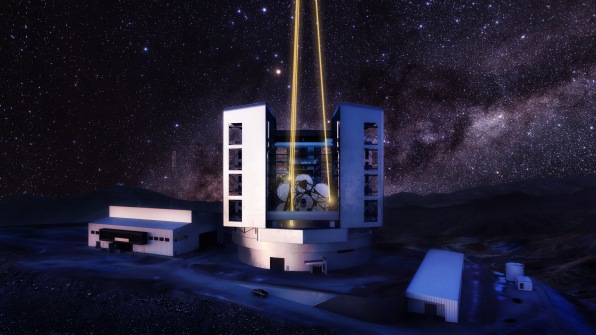
The other is the solar gravity lens (SGL), a space telescope that has nothing to do with the Webb, Hubble, or GMT. Nearly a century from realization, it’s a radical new design that will be able to actually observe planets in other solar systems so clearly that you will be able to see seas, continents, and clouds.The SGL will not use traditional mirrors, lenses, or optics that we know: Like its name says, the SGL will use the gravity of the sun itself as its optical zoom device. It’s based upon the effects of gravity on light first theorized by Albert Einstein. And instead of depending on a single mirror or sensor, this telescope will be formed by a swarm of instruments: a flotilla of self-assembled smart spaceships powered by light sails that will travel to a distance 14 times farther than the space between the Sun and Pluto.
GIANT MAGELLAN TELESCOPE VS. WEBB
When the GMT sees its first light in 2029, it will offer four times the resolution of the JWST, ten more than the Hubble, and, according to its designers, it will be 200 times more powerful than any comparable telescope currently on Earth. Financed by institutions from Australia, Brazil, South Korea, Chile, and the United States, the GMT just received a new $205 million investment to accelerate its construction, a good chunk of its $1 billion total budget.
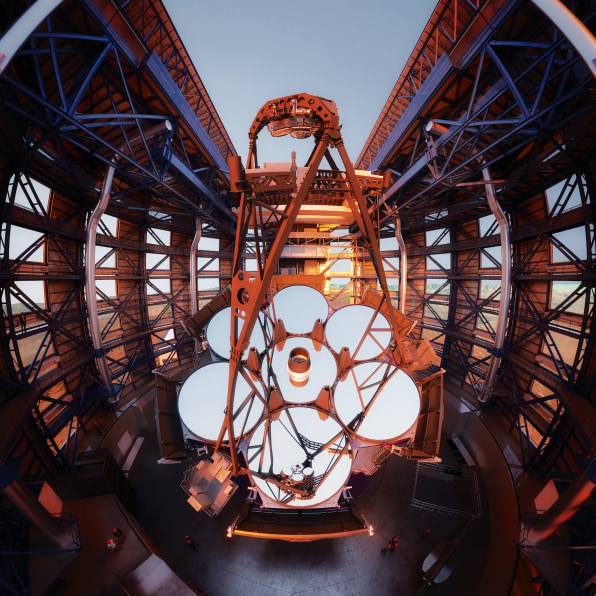
It’s a surprisingly low price for a telescope that has four times the resolution of Webb, a spaceship that has a $10 billion price tag. That price is the product of the complex origami-like mechanics that allowed it to get packed into a rocket’s small payload fairing and sustain the vibrations of its initial launch into space.
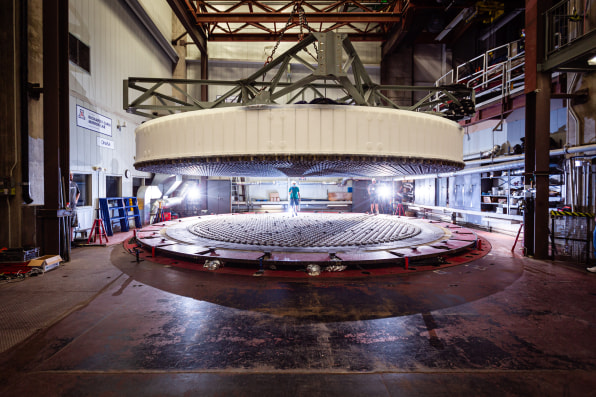
With a total diameter of 80 feet, the GMT truly dwarfs the combined 21.3 feet of the 18 mirrors that form the JWST. As Avi Loeb—theoretical physicist, longest-serving chair of Harvard’s department of astronomy, and director of the Institute for Theory and Computation of the Harvard-Smithsonian Center for Astrophysics—tells me, this results in “a resolving power that is an order of magnitude better, after compensating for blurring from atmospheric turbulence.”This resolving power—the ability of a telescope to form distinguishable images of objects separated by small angular distances—is key to distinguishing fine detail like different stars or planets that may be too close to each other for the James Webb to discern.
In addition, Loeb says the “GMT offers a light bucket [its capacity to collect light] with an area larger by an order of magnitude than JWST, and therefore could potentially detect fainter sources.” In total, the above capability will result in some incredibly sharp images, as the simulation below shows.
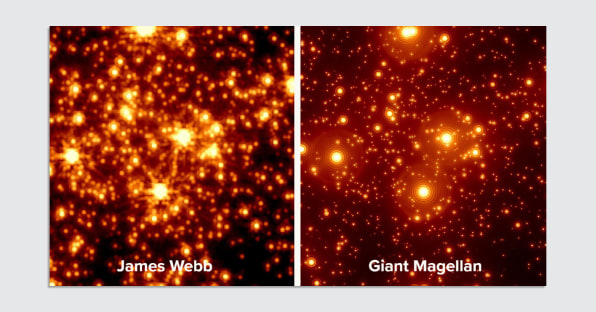
But while the GMT will offer a much larger resolution, it will have some limitations that the Webb doesn’t. “The catch is that like any ground-based observatory GMT will be limited by the brightness and opacity of the Earth’s atmosphere,” Loeb points out.Since the Earth’s atmosphere is too bright and opaque for many of the wavelength bands that the JWST is sensitive to, the GMT will not be able to observe some types of galaxies: specifically the older galaxies that are further back in time and therefore have a longer infrared wavelength. In fact, the JWST was designed from the ground up to capture just this type of light, its instruments shaded so that its heating by the sun will not compromise its infrared sensitivity.
Paul Gilster—an expert in astronomy and astronautics with the Planetary Society, member of the Tau Zero Foundation for the advancement of interstellar travel, and author of Centauri Dreams—says that Webb’s infrared sensitivity allows it to detect faint, distant galaxies from the earliest era of the universe. Actually, it has already detected a galaxy just 250 million years after the Big Bang, a discovery that is already affecting our understanding of the early universe.
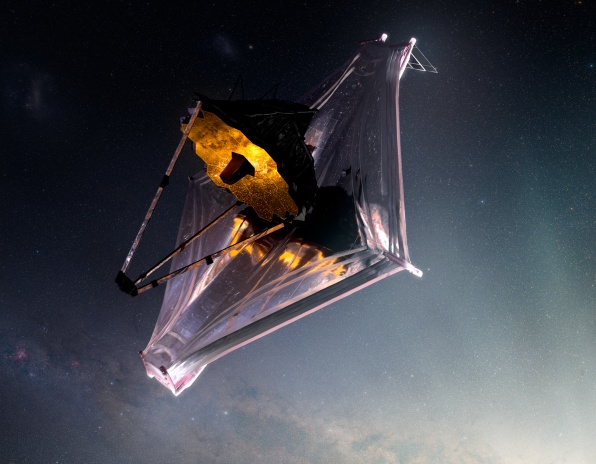
Another advantage of Webb’s design over the GMT is that it will be able to detect exoplanets that are overpowered by the brightness of their host stars. The reason, Gilster says, is the nature of stars’ visible and infrared light. “The sun is a billion times brighter than Jupiter in visible light, but only 100 times brighter at infrared wavelengths,” he explains, therefore making it easier to block and find planets around stars.That’s not to say that the Earth-based GMT will not be able to find and study exoplanets. All the contrary, as this is in fact a core part of its mission. Its lack of infrared sensitivity is compensated by its aforementioned extreme resolution, according to the non-profit organization that runs it: The GMT’s “high spatial resolution enables studies of the dynamical interactions between protoplanetary disks and planets, including the inner parts of planet-forming systems.” It also claims that the Magellan’s increased sensitivity will also be able to detect planets around faint stars, imaging exoplanets, and even “hunt for biosignatures in the atmospheres of exoplanets.”
A TELESCOPE AS BIG AS THE SOLAR SYSTEM
However, the capacity of the GMT to image exoplanets will be insignificant next to the solar gravity lens (SGL), a machine that will “sidestep the physical limitations of telescopes,” multiplying the power of the best technology available today by 1,000. First described by a group of scientists at Stanford University in a paper published in the Astrophysical Journal last May, this telescope will use the sun’s gravity itself as its lenses. There’s already a project being conceptualized at the Jet Propulsion Laboratory and the Aerospace Corporation that has received NASA funding.
Gravity lensing is nothing new. It is used by astronomers in all kinds of standard telescopes, including Hubble and Webb. It exploits a phenomenon called the Einstein Ring. As Einstein discovered, light is affected by gravity just like matter is. If light passes by an extremely massive object, it will get bent and distorted by the object’s gravity. In the case of an Einstein Ring, a cluster of galaxies or even black holes deform the light coming from anything behind it into a ring. When that gravity-formed ring is properly aligned and analyzed, it allows us to see something that the physical lens can’t image because they are not powerful enough.
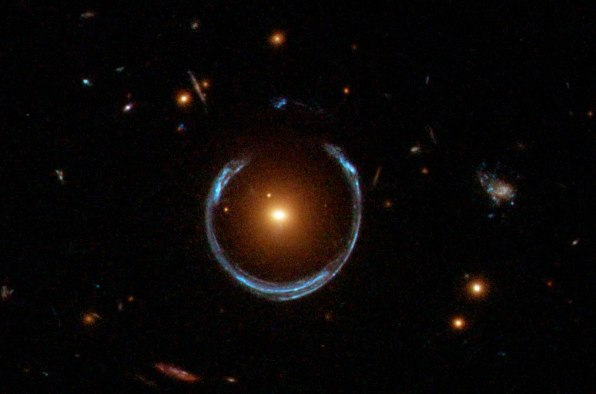
Using such a ring, we can capture things that are farther away than the native capability of a standard telescope. The SGL will do precisely that. When it reaches its destination, it will have the right focal distance to the sun’s natural gravity lens to zoom into faraway star systems hundreds of light years away. The sun will deform the light of these systems, and the SGL’s sensors will capture it, processing the data using algorithms and artificial intelligence to reconstruct exoplanets with a level of detail that defies belief, on the scale of tens of kilometers per pixel.
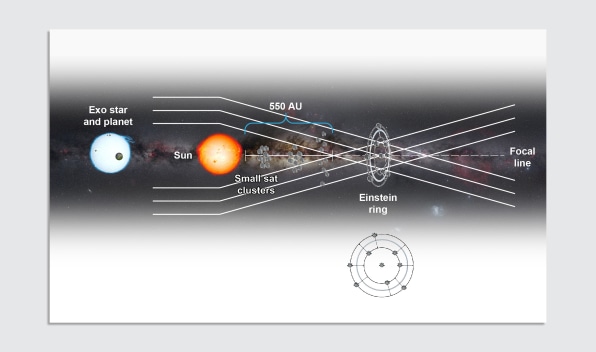
According to the scientists behind the project, it will be an instrument so incredibly powerful that it will allow us, for the first time in history, to see a planet in another solar system in detail–in so much detail that its proponents think it will be able to observe continents, oceans, clouds, and even active volcanoes. In fact, they claim that we will be able to see how the atmosphere moves while the exoplanet rotates around its mother star.Loeb—whose Galileo Project is focused on the search of potential relics and artifacts of extraterrestrial civilizations in our solar system—points out that the SGL “could potentially resolve technological features on an exoplanet, including (alien) city lights on its night side, industrial pollution in its atmosphere, and megastructures around it.” He explains, however, that “the main challenge of using the sun as a gravitational lens is knowing in which direction exactly to look. A very high angular resolution implies that we need to know where the planet is to an exquisite precision.”
A MULTIGENERATIONAL EFFORT
The challenge for launching the SGL is that, in order to take advantage of our sun’s gravity, the SGL must be at a minimum distance of 550 astronomical units (AU) from our home star. (A single AU is a giant distance measuring 9.2956 by 107 miles). Basically, the mission will park this device at a point in space that is located 14 times the distance from the sun to Pluto. Right now, the Voyager 1 probe—the farthest object of human origin from Earth—is at 156 AU after 44 years of travel. And Webb is only at 0.01 AU from the sun.
This will be hard—it’s a goal that could take until the end of our century to realize. “The New Horizons spacecraft reached Pluto at 33 AU a decade later. If a similar rocket would be used to launch a mission to the solar gravitational lens, it would take around 130 years to reach the distance of the focus for the lens,” Loeb tells me. “The larger distance also implies that it will be challenging to service the instruments. This will increase the cost to be more than JWST most likely by orders of magnitude.”
The first problem to solve will be to shorten the travel time to install the telescope. Right now, there is no technology—such as direct nuclear fusion motors—to accelerate a Hubble-size telescope at a speed of 20 AU per year (the minimum speed the scientists behind the SGL consider acceptable). So, instead of sending a single telescope such as Hubble or Webb, the team wants to send several small modular satellites to the sun, which would each be light enough to use solar sails to reach the observation point in an acceptable time frame.
Gilster says if the SGL mission currently being designed at the Jet Propulsion Laboratory gets funded, “the team behind it believes it could be launched within a decade, given our growing experience with miniaturization and small satellites. The concept is to send numerous small spacecraft, each equipped with a solar sail, for a close pass of the sun, using the sails to reach maximum velocity and then flinging these craft outward.”
This design will accelerate those small spaceships to a speed fast enough to reach its destination before the end of this century. “The concept is daring and would reduce costs, for the design is modular, so that the spacecraft assembles itself en route, with the individual sail craft merging as they pass the orbit of the Earth,” Gilster tells me. It is not a controversial idea, though. NASA is already working on a project called On-Orbit Autonomous Assembly from Nanosatellites (OAAN), he points out, along with a CubeSat Proximity Operations Demonstration mission that will put these ideas in practice.
THE GOLDEN AGE OF ASTRONOMY
Building and installing the SGL into the cosmos is a daunting project. It’s also a worthy one. As Bruce Macintosh—one of the leaders of this project and professor of physics at the Stanford School of Humanities and Sciences and deputy director of the Kavli Institute of Astrophysics and Particle Cosmology (KIPAC)—points out, this new telescope has the potential to affect human consciousness itself, as did Earthrise, the first image of the Earth dawning over the moon.

“We want to take photos of planets that are orbiting other stars that are as good as the photos we can take of planets in our own solar system. With this technology, we hope to take a photo of a planet 100 light years away that has the same impact as the Earth image of Apollo 8,” Macintosh says. The image taken by Apollo had a profound effect worldwide that influenced the creation of institutions such as the American Environmental Protection Agency and Doctors Without Borders.
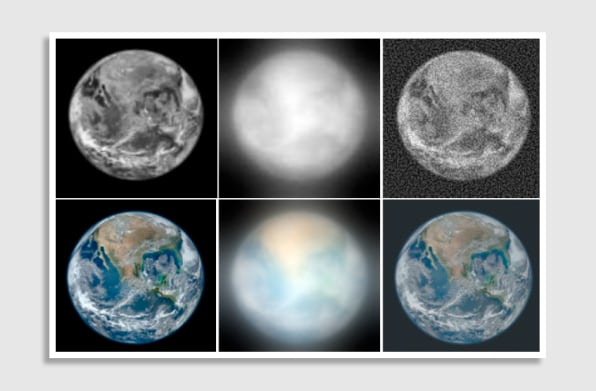
It’s literally and figuratively a long shot, but that’s what moves humanity forward: “doing things not because they are easy, but because they are hard.”











